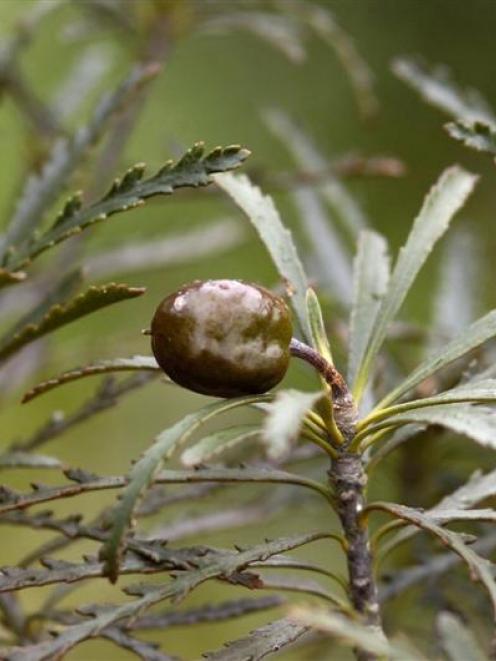
Within this genus there is a large variation in leaf form, size and branch structure.
Found throughout the southern hemisphere, 26 Pittosporum species are endemic to New Zealand.
Common habitats are mountain and subalpine forest and scrub.
The genus name, Pittosporum means pitch seed, which refers to the sticky fluid that holds the small, polished seeds in the fruiting capsules.
Lancewood or pittosporum?
Pittosporum patulum, nicknamed pitpat, has small, toothed, green to chocolate juvenile leaves, which look more like a lancewood than a pittosporum.
Leaves on the adult cluster at the ends of the branches and have lost their distinctive teeth.
Pitpat forms a round headed tree up to 5m high.
Like many of the Pittosporum, its red flowers are fragrant.
This plant is at present in full flower at the Botanic Garden.
Columnar twiggy Heart-leaved kohuhu, or Pittosporum obcordatum is another small tree, which needs limited space to grow.
Branches are interlacing and divaricating, with small, heart-shaped dark green to yellow green leaves.
Delicate veins can be seen on the leaf undersides.
It eventually forms a columnar tree up to 4m to 5m high.
Natural habitat
Pitpat grows naturally in high-altitude scrub and mountain beech forest and is limited to Nelson, Marlborough, Canterbury and North Otago.
Heart-leaved kohuhu is found in mainly eastern lowland forests on the flood plains.
Both species are classed as nationally endangered due to browsing pressure and natural disturbance of the habitat.
Take a closer look
From a distance neither of these plants appears remarkable, but on close inspection they reveal their finer details.
Both plants can be seen in the Native Plant Collection Pittosporum Border.
- Kate Barnard
Kate Barnard is a diploma student from Royal Botanic Garden, Edinburgh, and recently completed a one-year international trainee placement at Dunedin Botanic Garden.












